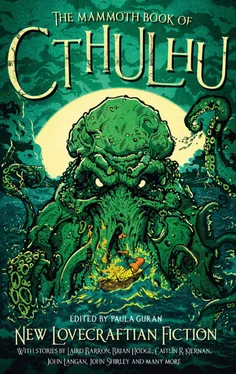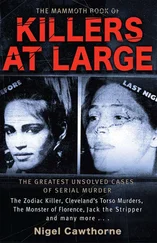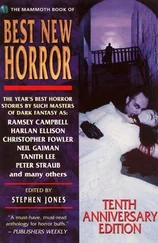I Dress My Lover in Yellow
Enclosed are the documents deemed most pertinent to the ongoing investigation into the disappearances of Rani Alam and Casey Wilton. In addition to one photocopied document are several hand-written copies of original documents from the Special Collections of St. Everild’s University Library. These documents have been compared to the originals, and have been found to be faithful and unaltered. The primary handwriting has been confirmed as that of Ms. Wilton. The interstitial and marginal notes on both the photocopy and the hand-written reproductions are confirmed as being written by Ms. Alam.
Excerpted from “The Phantom Masterpiece: Blaine Roderick’s Lost Painting”,
Great Artists of New England , A. Jansen and Tucker Cummings, eds, University of St. Everild’s Press, 1984.
It is likely Blaine Roderick’s career as an artist would be largely unremembered today if it were not for one extraordinary painting or, rather, the lack of a painting.
Little is known about Blaine Roderick. His earliest surviving works date from 1869, just six years before his disappearance. These works consist primarily of commissioned portraits, along with the odd landscape, and are considered largely derivative of his contemporaries while lacking their best qualities. It is known Roderick supplemented his portrait work with irregular teaching stints, the last of which was his position at St. Everild’s University.
One painting falls completely outside the pattern established by the artist’s early works. This is Roderick’s famous (or infamous) lost masterpiece, “Mrs. Aimsbury in a Yellow Dress,” known colloquially as “I Dress My Lover in Yellow, I Dress My Lover in Ruin.”
By most accounts, “Yellow” is not only Roderick’s masterpiece, but far surpasses those contemporaries he is so often accused of imitating, though many claim the painting is elevated solely by the mystery surrounding it. Alas for history, judging the matter is impossible. All that remains of the work is the original frame and a handful of accounts written prior to its disappearance.
Even these primary descriptive sources are considered problematic among scholars, going beyond the subjective and ranging from extreme praise to outright condemnation. Their unreliability, in all cases deemed to be tainted by personal bias, has led many scholars to believe some accounts may be deliberately false.
Regardless, the majority of these accounts focus on the feelings evoked by the work, rather than its content, making them of questionable value to begin with. An example of one such account was penned by Giddeon Parson, one of Roderick’s aforementioned contemporaries. Parson calls “Yellow,” “a vile piece of filth fit for nothing but the fire, though I suspect even flame would disdain to touch it.”
A slightly more tempered account is offered by Vincent Calloway, a frequent contributor to the society pages of the Tarrysville Herald , who had occasion to see the work at a fundraiser to benefit the university:
Regardless of what one thinks of Blaine Roderick’s skill as a painter, the mastery of his brushwork, his use of light, and the startling effect of his palette cannot be called in to question here. However, one must question his powers of observation. As a personal friend of both Mrs. Aimsbury and her husband, Dean Howard Aimsbury, the portrait struck me as executed by someone who had never laid eyes on its subject. From whence did Roderick draw the wan coloring of Mrs. Aimsbury’s cheeks? Never have I known her features to be so sharply sunken. It is most unsettling; one can almost see the skull beneath the flesh.
If the effect is meant to be satirical, it misses the mark, and is furthermore an unwise choice for an unknown artist relying upon the Dean not only for his commission, but his continued employment at the university. The less said about the lewd manner in which Roderick paints the dress slipping from Mrs. Aimsbury’s shoulder, the better.
Colorful descriptions aside, a few incontrovertible facts remain. The subject of the painting was Charlotte Aimsbury (nee Whitmore). The portrait, commissioned by Charlotte Aimsbury’s husband, Dean Howard Aimsbury, was full-length, oil on canvas, measuring 103¾ by 79 inches. That is where the certainty ends.
The supposed masterpiece either depicts Mrs. Aimsbury clothed in a formal yellow gown, partially clothed in the same, or nude, having just stepped out of the gown pooled at her feet. She either faces the viewer, stands in profile, or looks back over her shoulder. Her expression is one of fear, as though she intends to flee; surprise, as if the viewer has intruded upon her private chambers; or suggestive, as though the viewer is fully expected and welcome.
Most accounts describe the background as largely obscured, as though prematurely stained by a patina of smoke. Those descriptions that purport to be able to make it out chiefly describe indistinct figures, or a city shrouded by fog or blowing sand. However other accounts have the backdrop as nothing but a series of doors receding down a hallway, all closed save for one.
One account — most outlandish and therefore likely false — claims the backdrop depicts an abattoir. This description, as preposterous as it may be, has led some to speculate Roderick reused his canvas, painting Mrs. Aimsbury atop a wholly different scene meant to be a commentary upon the deplorable conditions faced by immigrant workers in America’s slaughterhouses.
Beyond its physical appearance, the ultimate fate of “Yellow” is a matter of much debate as well. Later in his life, long after the disappearance and presumed deaths of both Blaine Roderick and Charlotte Aimsbury, Dean Aimsbury admitted to cutting the portrait from its frame and burning it. However, when questioned, the Dean’s housekeeper, Mrs. Templeton claimed if evidence of such a burning existed she would have found it. She is further reported to have said the Dean was “poorly” and “prone to confusion and fits of imagination” at the time of this confession.
Amidst this confusion, one thread of commonality does exist across all accounts of the painting: the mention of the artist’s use of color, in one form or other. Here again we find equal parts praise and damnation, everything from “brilliant, pure genius” to “having the appearance of a palette mixed by a blind imbecile, producing an effect not unlike physical illness.” But every account does mention color, with at least one calling Roderick’s use of it “near-supernatural, for good or for ill.”
* * *
Casey — Before you get pissed at me for writing on your research notes, I submit for your consideration this: You have not taken your nose out of your books in almost three weeks. There’s more to life than studying. I am officially kidnapping you for a movie night. No excuses. It’s a double-feature: House of Wax and Dementia 13. I promise, you’ll love it. I’ll even make dinner. Kisses, Rani.
“Toward a New Understanding of Color Theory” by Blaine Roderick (incomplete draft), St. Everild’s University, Special Collections, 1877.02.01.17.
[Appended note from Robert Smythe, Head of Special Collections, 1923–47: The following selection from the papers of Blaine Roderick represents an early draft of an unpublished treatise on color theory. It is remarkable for the way it mixes scholarly writing and personal musings, lending credence to the theory Roderick suffered from an undiagnosed mental illness at the time of his disappearance and presumed death .]
If we are to follow slavishly in the footsteps of Isaac Newton, Moses Harris, and Johann Wolfgang von Goethe, we are left with only the primary, secondary, and tertiary colors upon the wheel, leaving no room for the creation of truly transcendent art. While theirs are serviceable models, they admit no space for otherness , for the ethereal, the cosmic, that which goes beyond the veil.
Читать дальше












